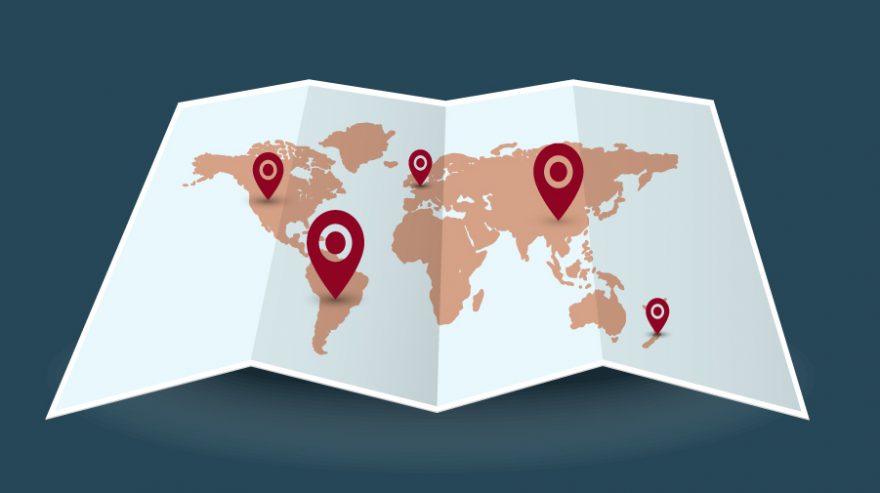New Online Tool Seeks to Map the Universe of Educational Research and Development

A new online tool seeks to map the universe of research and development focused on schools, with the goal of breaking down barriers and encouraging collaboration among academic scholars, educators, and product developers.
The ecosystem mapping tool, developed by the nonprofit Advanced Education Research and Development Fund, gives users the ability to search for those working in education R&D by area of focus — such as math, writing, racial and social equity, and cognitive health — or by the names of individual researchers and organizations.
Researchers, developers, and educators “each operate in their own silos and lack a common language,” leading to fragmentation in the field, leaders at AERDF said in a statement announcing the launch of the mapping tool. The map aims to fill in the “mismatch between who has data and who is best-positioned and trained to assess those data.”
The tool is free to the public and shows areas of overlap, or “clusters,” grouping academic scholars and other researchers together based on similarities they have in their work in education. Researchers can add their work to the system or filter results by work focus or role to look for others participating in specific aspects of education R&D.
Education R&D “is often hindered by a single sector not knowing who to connect to in another sector,” Marvin Smith, chief public affairs officer for AERDF, said in an email. “That may look like researchers not knowing product developers who could build new tools coming from their research insights, or developers building new education programs that don’t fully respond to classroom needs.”
The Advanced Education Research and Development Fund is a national nonprofit based in California. Led by CEO Stacey Childress, its goal is to support R&D projects in education focused on the most “intractable” problems in teaching and learning, with a particular focus on solving those affecting Black and Latino students and all students in poverty.
AERDF’s partners in developing this tool include field leaders and The Starfish Institute, a social-change-based nonprofit advisory organization. The groups aim to advance education R&D by bridging the gap between those on the forefront of such work, and to prevent duplicative efforts.
Education research and development is still an emerging field, and an important first step for fields at this phase is to identify key leaders taking on various types of work.Marvin Smith, chief public affairs officer, AERDF
Elizabeth Albro, the commissioner of the National Center for Education Research, a federal entity that supports research, said she has also seen evidence of a disconnect when it comes to those working in different spaces of education.
“The terminology that educators use and the terminology that researchers use is often different. That means that it’s hard for individuals to communicate,” Albro said. A mapping tool like the one created by the development fund “can help with creating shared understanding.”
Though AERDF leaders say connecting researchers will encourage communication and prevent duplicative efforts in research that is already being done, Albro said building a body of evidence around different topics can be beneficial too.
“You need to have duplication, so you can synthesize work, and so there are multiple studies around the same big issues,” Albro said.
The founding organizations hope that the tool will spur innovation by connecting education practitioners, researchers, and developers, and creating new opportunities for new funding to support that research, AERDF’s Smith said.
Federal Money Is Flowing
When there’s more visibility about research priorities, “it becomes easier to mobilize new private and public investment and support leaders in finding the resources needed to do their work,” Smith said.
Currently, about 0.5 percent of total federal K-12 dollars is invested into education R&D, according to AERDF’s research. But the mapping tool is being launched at a time when renewed federal attention is being directed toward K-12 education in an effort to bounce back from the pandemic. Over the past few years, a combined $190 billion in federal stimulus funding has been directed to school districts, which are supposed to channel a portion of that money into learning recovery.
Work on the mapping tool began in January. The process began with a discovery phase, in which the founding organizations conducted interviews, followed by a survey inviting researchers to add their names and projects to the map.
AERDF plans to continue to build the map out as new entries are submitted.
“Education research and development is still an emerging field, and an important first step for fields at this phase is to identify key leaders taking on various types of work,” Smith said. “We hope people will explore the map and filter views by areas of most interest and consider new collaborations that will develop more evidence and community-based solutions that are improving student experiences.”
Follow EdWeek Market Brief on Twitter @EdMarketBrief or connect with us on LinkedIn.
Credit: DigitalVision Vectors
See also:
